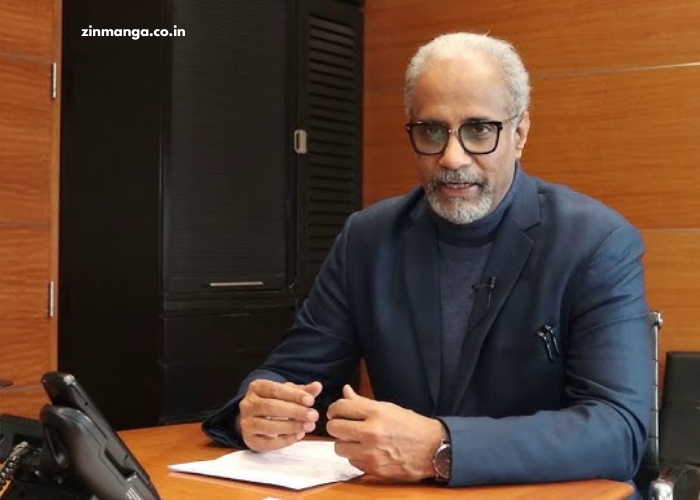Anime has become a global phenomenon, with millions of fans eagerly awaiting the latest episodes and series. However, with such a vast number of anime titles to choose from, it can sometimes be difficult to determine which shows are worth continuing after you’ve watched the first episode. That’s where the “3-Episode Rule” comes into play. This guideline suggests that you should watch at least three episodes of an anime before deciding whether to continue or move on to something else.
The first episode of an anime can often be misleading—it may not fully represent the series, or it could be introducing the world, characters, and plot in a slow and complex way. By watching three episodes, you give the series a fair chance to develop, which helps in making an informed decision about whether it’s worth investing your time in.
In this blog, we’ll explore the reasons why the “3-Episode Rule” works, how it can benefit your anime-watching experience, and how it can help you discover hidden gems in the anime world.
Key Points:
- The first episode doesn’t always represent the anime accurately.
- Watching three episodes allows enough time to evaluate the characters and plot.
- The rule helps avoid prematurely abandoning an anime that could become enjoyable.
Why Is Watching 3 Episodes Important?
The idea behind watching at least three episodes before deciding whether to continue with an anime is to ensure that you give the series a fair chance to grow and develop. Many anime shows take time to build their world, introduce the main characters, and set up the story. The first episode often serves as an introduction, which can sometimes be slow or feel disconnected from the overall narrative.
In some cases, anime takes a few episodes to hit its stride. By the third episode, the plot is usually more defined, and the characters start showing their true personalities and motives. You might also get a better feel for the animation style, pacing, and tone of the show, all of which are important factors in determining whether you want to continue watching.
For example, in anime like Attack on Titan, the first episode can feel overwhelming due to the introduction of a large world and complex characters. However, as you watch a few more episodes, you start to understand the plot’s depth, and the pacing becomes faster, making it more engaging. This demonstrates why giving a show three episodes before making a decision can often lead to a more informed and satisfying viewing experience.
What Can You Learn in the First Three Episodes of an Anime?
In the first three episodes, you can learn a lot about the direction of an anime, the main characters, and the overall atmosphere. These episodes provide an essential foundation for understanding what to expect from the series. Here’s a breakdown of what you can gather from watching the first three episodes:
Character Development
The first few episodes of a show usually focus on introducing the main characters. You may not know everything about them right away, but these episodes allow you to see their initial characteristics and how they interact with others. For instance, in My Hero Academia, the first three episodes establish Deku’s struggle to become a hero, his relationships with other students, and his motivations, which are all essential for understanding his journey.
Plot Setup
While the first episode may be focused on introducing the setting and characters, the following episodes begin to push the plot forward. By watching three episodes, you’ll be able to get a clearer sense of the anime’s main plot and whether it excites you. For example, in One Piece, the first episodes focus on Luffy’s journey to find a crew, but by episode three, you get a sense of the overarching adventure and the themes of friendship and freedom.
Tone and Pacing
Some anime can have slow starts or, alternatively, feel too fast-paced. By watching three episodes, you can get a better sense of the anime’s tone—whether it’s comedic, dramatic, action-packed, or emotional. For instance, Your Lie in April starts off relatively calm but gains emotional depth as the episodes progress. If you had judged it solely on the first episode, you might not have experienced the emotional impact the show has to offer.
When Should You Break the 3-Episode Rule?
While the 3-episode rule is generally a great guideline, there are some exceptions when you might want to stop watching earlier or give it more time. Here are some situations when the rule may not apply:
When the First Episode is Clearly a Red Flag
If the first episode of an anime is poorly animated, has a confusing plot, or leaves you with an overwhelming sense of dissatisfaction, it may be a sign to stop watching. For example, if the animation is too jarring or the plot is incomprehensible, continuing might not be worth your time, especially if you feel that it won’t improve in the following episodes.
When the Genre Isn’t Your Taste
If the anime belongs to a genre that doesn’t resonate with you, it might be worth stopping after the first episode. For example, if you don’t enjoy slice-of-life shows, but are watching a popular series like Clannad out of curiosity, you might not feel compelled to watch three episodes. It’s important to recognize if the genre is something you want to invest time in.
When You’re Just Not Interested
Sometimes, after just one or two episodes, you may feel that the anime isn’t right for you. It’s okay to trust your instincts if the show doesn’t grab your attention within the first few episodes. Anime is meant to be enjoyable, and if a series doesn’t spark your interest, it’s okay to move on and explore something else.
How Does the 3-Episode Rule Help You Discover Great Anime?
Following the “watch 3 episodes before deciding” rule can actually help you discover some truly amazing anime that you might have missed if you judged the show based solely on its first episode. Often, the initial episode might feel like it’s only scratching the surface, and it takes a few more to reveal its depth.
For instance, shows like Fullmetal Alchemist: Brotherhood and Hunter x Hunter take a few episodes to introduce the complexity of their plots and characters. After watching a few episodes, you’ll begin to understand the brilliance of the storytelling, making it worth continuing.
Additionally, watching three episodes allows you to determine if the pacing and tone of the anime suit your preferences. You might be surprised by a series you initially didn’t enjoy after the first episode, only to find that by episode three, it has turned into one of your favorites.
Here’s a comparison chart of the first three episodes of popular anime and how they compare in terms of plot development:
| Anime Title | Episode 1 Focus | Episode 2 Focus | Episode 3 Focus |
| Fullmetal Alchemist | Introduction to the brothers | Exploration of their goal | Deeper dive into the story |
| Attack on Titan | Introduction of the Titans | First battle with Titans | The characters’ growth and reactions |
| Hunter x Hunter | Gon meets Killua | Gon and Killua’s friendship | The first big test (Hunter Exam) |
| Your Lie in April | Introduction to Kousei’s world | Music & Kousei’s struggles | Emotional development with the piano |
Conclusion
The “3-Episode Rule” is a great guideline for anime fans who want to make sure they’re investing their time in the right series. Watching at least three episodes gives you a better understanding of the characters, plot, and tone of the show, allowing you to make a more informed decision.
While the first episode might not always capture the full essence of an anime, giving it a few more episodes can reveal the depth and emotional connection that could make it a show worth following. The rule also helps you avoid prematurely abandoning shows that could eventually become your favorites.
FAQ’s
- Why should I watch 3 episodes before deciding to continue with an anime?
Watching 3 episodes allows you to better understand the characters, plot, and tone, giving the anime a fair chance to develop. - Can I break the 3-episode rule?
Yes, if the first episode is clearly not to your liking, or if the anime’s genre doesn’t suit your taste, it’s okay to stop earlier. - What if I don’t like the anime after 3 episodes?
If the anime hasn’t grabbed your attention after 3 episodes, it’s probably time to move on to something else that better fits your preferences. - Does the 3-episode rule apply to all anime?
While the 3-episode rule works for most anime, there are exceptions, especially if the first episode already makes it clear the anime isn’t for you. - How can the 3-episode rule help me discover new anime?
The rule helps you give anime a fair chance, allowing you to uncover hidden gems that may take a few episodes to truly shine.




